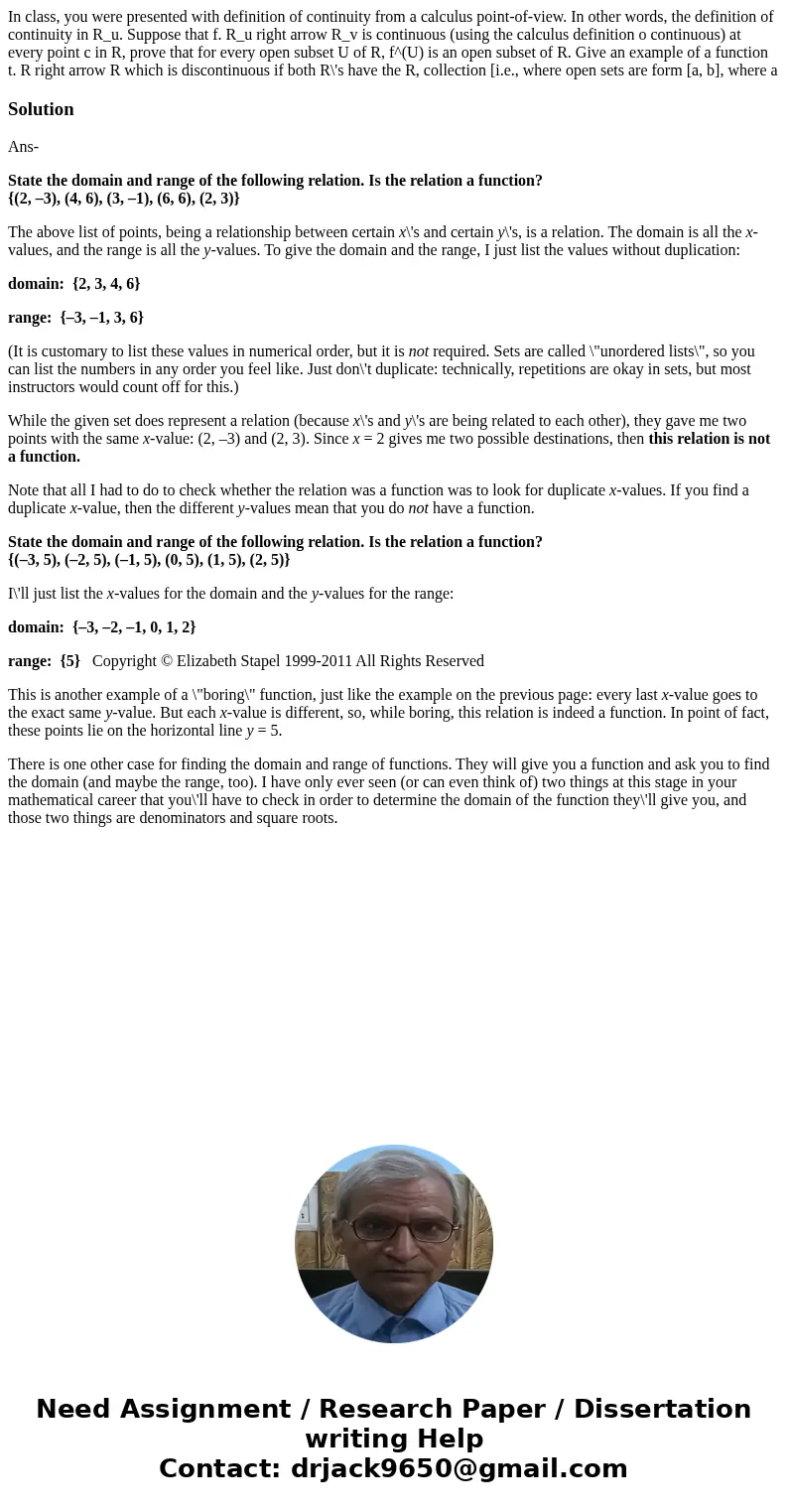In class you were presented with definition of continuity fr
Solution
Ans-
State the domain and range of the following relation. Is the relation a function?
{(2, –3), (4, 6), (3, –1), (6, 6), (2, 3)}
The above list of points, being a relationship between certain x\'s and certain y\'s, is a relation. The domain is all the x-values, and the range is all the y-values. To give the domain and the range, I just list the values without duplication:
domain: {2, 3, 4, 6}
range: {–3, –1, 3, 6}
(It is customary to list these values in numerical order, but it is not required. Sets are called \"unordered lists\", so you can list the numbers in any order you feel like. Just don\'t duplicate: technically, repetitions are okay in sets, but most instructors would count off for this.)
While the given set does represent a relation (because x\'s and y\'s are being related to each other), they gave me two points with the same x-value: (2, –3) and (2, 3). Since x = 2 gives me two possible destinations, then this relation is not a function.
Note that all I had to do to check whether the relation was a function was to look for duplicate x-values. If you find a duplicate x-value, then the different y-values mean that you do not have a function.
State the domain and range of the following relation. Is the relation a function?
{(–3, 5), (–2, 5), (–1, 5), (0, 5), (1, 5), (2, 5)}
I\'ll just list the x-values for the domain and the y-values for the range:
domain: {–3, –2, –1, 0, 1, 2}
range: {5} Copyright © Elizabeth Stapel 1999-2011 All Rights Reserved
This is another example of a \"boring\" function, just like the example on the previous page: every last x-value goes to the exact same y-value. But each x-value is different, so, while boring, this relation is indeed a function. In point of fact, these points lie on the horizontal line y = 5.
There is one other case for finding the domain and range of functions. They will give you a function and ask you to find the domain (and maybe the range, too). I have only ever seen (or can even think of) two things at this stage in your mathematical career that you\'ll have to check in order to determine the domain of the function they\'ll give you, and those two things are denominators and square roots.

 Homework Sourse
Homework Sourse